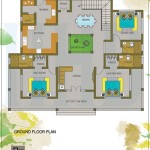Exploring Traditional Japanese House Floor Plans: A Journey into Timeless Design
Traditional Japanese house floor plans embody centuries of architectural wisdom, reflecting a harmonious blend of aesthetics, functionality, and cultural values. These homes not only provide shelter but also create a living environment that fosters tranquility, connection to nature, and a deep appreciation for minimalist beauty.
The Genkan: A Welcoming Threshold
Upon entering a traditional Japanese house, one encounters the genkan, an entryway that serves as a transitional space between the outside world and the home's interior. It is here that guests remove their shoes before stepping onto the raised tatami flooring, marking a symbolic transition from the mundane to the sacred.
The Tatami: Versatile and Multifaceted
Tatami mats, made from woven rice straw, form the foundation of Japanese house floors. Their size (approximately 90 cm x 180 cm) and thickness (approximately 5 cm) create a modular system that allows for flexible room configurations. Tatami not only provides a comfortable and insulating surface but also defines spatial relationships and serves as a unit of measurement.
The Shoji and Fusuma: Boundaries and Flexibility
Sliding paper screens known as shoji and fusuma play a crucial role in Japanese house floor plans. Shoji, with their translucent paper panels, provide natural light while maintaining privacy. Fusuma, on the other hand, are opaque sliding screens used to divide rooms or create temporary enclosures. Together, these screens allow for versatile and dynamic spatial configurations.
The Tokonoma and Nando: Focal Points of Serenity
The tokonoma, an alcove in the main living area, serves as a focal point for artistic expression. It typically houses a seasonal arrangement of flowers, a scroll, or a piece of calligraphy. Opposite the tokonoma is the nando, an elevated alcove used for receiving guests or as a study space.
The Engawa: Connecting Indoors and Out
The engawa is a covered verandah that runs along the perimeter of the house. It provides a transitional space between the interior and the garden, blurring the boundaries between the two. The engawa invites contemplation, offering a serene and meditative setting for enjoying the beauty of nature.
The Niwa: A Serene Garden Oasis
Traditional Japanese house floor plans often incorporate a niwa, a carefully designed garden that complements the home's architecture. The niwa provides a tranquil outdoor space for relaxation, reflection, and communion with nature. Its elements, such as rocks, water features, and meticulously arranged plants, create a harmonious and symbolic landscape.
Preserving Cultural Heritage in Modern Times
While preserving traditional Japanese house floor plans in contemporary architecture can present challenges, it remains important to appreciate and adapt these timeless principles to modern sensibilities. By incorporating elements such as tatami flooring, sliding screens, and engawa spaces, architects can create homes that honor the rich cultural heritage of Japan while meeting the evolving needs of modern living.

Typical Home Layouts Differences Between Japan And Abroad

Traditional Japanese Home Floor Plan Cool House Plans Ideas Des Architecture Style

Traditional Japanese House Plan Style Plans

Japanese Home Design Ideas Pictures 331 Sqm Homestyler

The Layout Of Ground And First Floor A Traditional Japanese House Scientific Diagram

98 Japanese Traditional Floor Plans Ideas House Architecture

Traditional Japanese House Floor Plan Google Search Plans

Nice Traditional Japanese House Floor Plan Minimalist Home Design

98 Japanese Traditional Floor Plans Ideas House Architecture

Japanese Home Design Ideas Pictures 331 Sqm Homestyler
Related Posts








